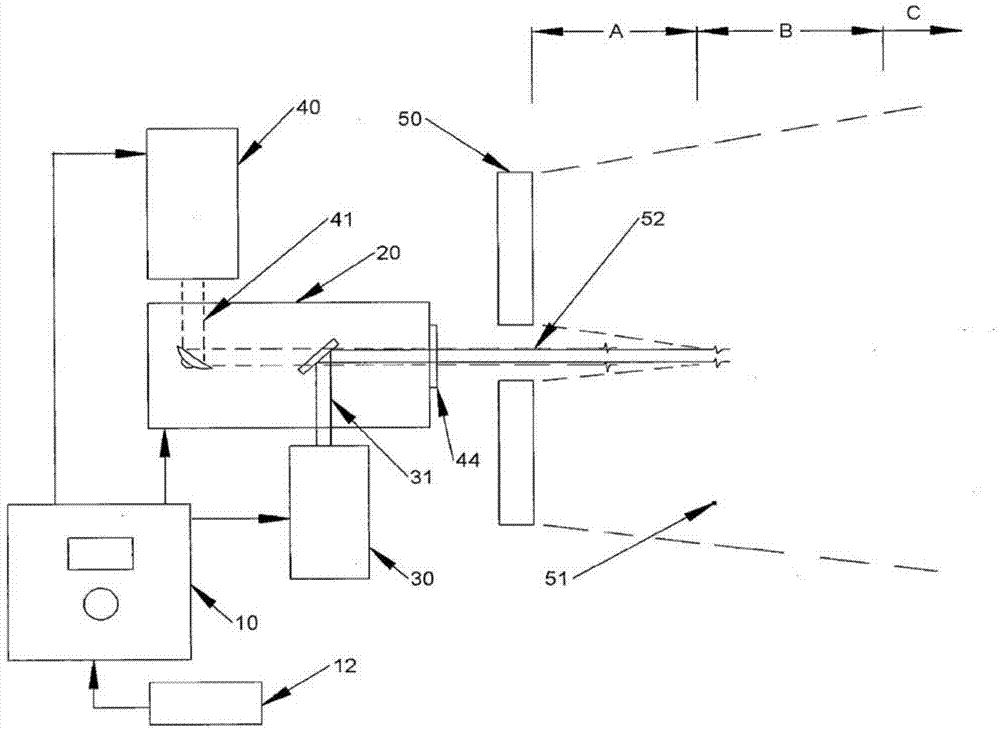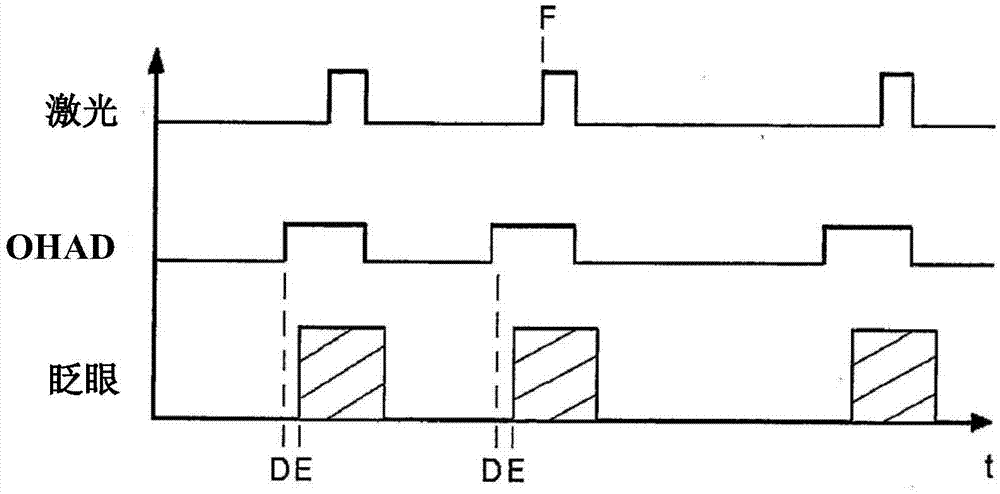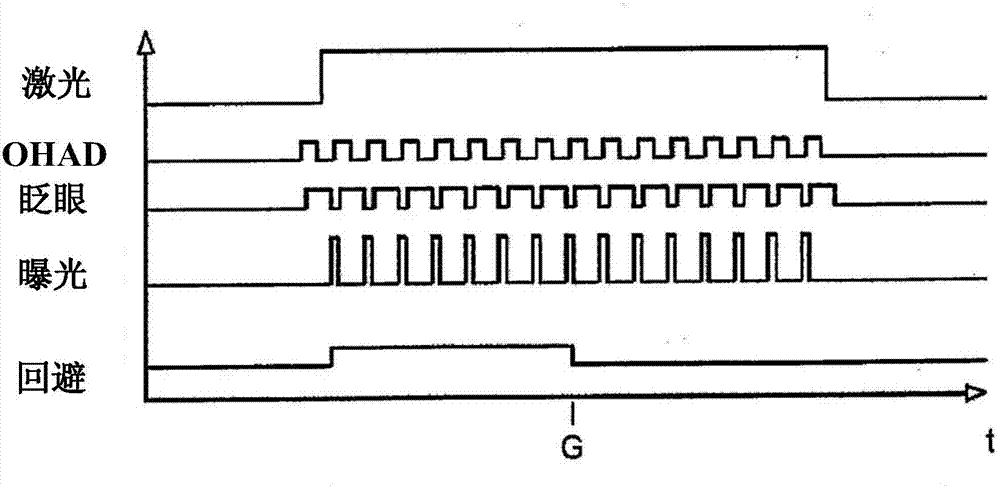Optical hazard avoidance device and method
An optical, dangerous technology, applied in the direction of optics, auxiliary devices, measuring devices, etc.
- Summary
- Abstract
- Description
- Claims
- Application Information
AI Technical Summary
Problems solved by technology
Method used
Image
Examples
Embodiment Construction
[0038] figure 1 An embodiment of a system including an optical hazard avoidance device (OHAD) is shown. The system includes a power supply 12 that provides or directs power to a controller 10 that controls the operation of components of the OHAD, including lasers 40 and arrays 50 such as speakers, light emitting diodes, microwave or other radiation sources. A potential source of optical hazard 30 is represented by a device such as a laser. Optical hazards may be mitigated by, for example, OHADs for balanced detectors used in the field, and may be useful for other optical hazards, such as energy sources used in industrial processes, such as other optical hazards and may be useful energy used in industrial processes such as curing epoxies, communications, object recognition, etc. The first laser 40 and the second laser 30 emit a beam of radiation 41, which may be visible light or radiation not in the visible spectrum, may be referred to herein as light, even if the radiation i...
PUM
 Login to View More
Login to View More Abstract
Description
Claims
Application Information
 Login to View More
Login to View More - R&D
- Intellectual Property
- Life Sciences
- Materials
- Tech Scout
- Unparalleled Data Quality
- Higher Quality Content
- 60% Fewer Hallucinations
Browse by: Latest US Patents, China's latest patents, Technical Efficacy Thesaurus, Application Domain, Technology Topic, Popular Technical Reports.
© 2025 PatSnap. All rights reserved.Legal|Privacy policy|Modern Slavery Act Transparency Statement|Sitemap|About US| Contact US: help@patsnap.com



